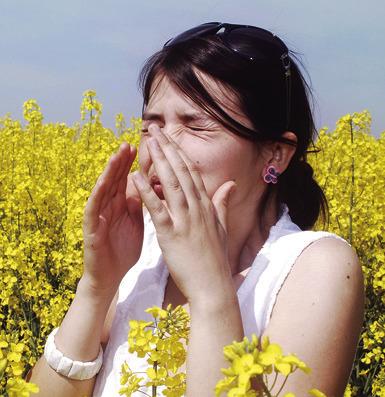Mayo Clinic Q and A: Allergies or a virus? How to tell the difference
Allergies or a virus? How to tell the difference
Mayo Clinic News Network DEAR MAYO CLINIC: Every year I am plagued by springtime allergies. But in the last few weeks I have been experiencing congestion, runny nose and a persistent cough. How can I determine whether this is a cold, allergies or something more? When should I seek medical care?
ANSWER: As the seasons shift, it can be harder to distinguish between the symptoms of the common cold, COVID-19, the flu and allergies, since all can have similar symptoms. This can lead to confusion as to when to seek medical care.
COVID-19 is caused by SARS-CoV-2, and the flu comes from a strain of the influenza virus. The common cold most often is caused by rhinoviruses. These viruses all spread in similar ways — by tiny particles that originate from the lips and nose when a person sneezes, coughs, sings or touches a surface. For instance, germs can get picked up from a surface —like a phone or computer keyboard — and then be transmitted into the mouth, nose or eyes.
The most common symptoms of COVID-19 are fever, cough and tiredness. But there are many other possible signs and symptoms, which may include sore throat, runny or stuffy nose, diarrhea, nausea or vomiting. Most colds will not include diarrhea, nausea or vomiting. And fever is rare with the common cold.
Allergies, on the other hand, are not caused by a virus but rather by immune system responses triggered by exposure to allergens, such as seasonal tree or grass pollens. Sneezing and runny noses are two symptoms of allergies. Itchy skin, a scratchy nose or eyes, and tearing eyes also might potentially be symptoms of an allergy.
Timing of your symptoms and duration can help you determine what is ailing you.
While COVID-19 symptoms generally appear two to 14 days after exposure to SARS-CoV-2, symptoms of a common cold usually appear one to three days after exposure to a cold-causing virus. And as far as duration, typically, a cold or virus will run over 10 days to two weeks. Many patients who have been recently diagnosed with COVID-19 are continuing to report symptoms that are lasting several weeks and months.
If you know you have allergies, the best way to prevent issues is to avoid your known triggers. If you’re allergic to pollen, stay inside with windows and doors closed when there’s a lot of pollen in the air. If you’ve been outside, take a cool shower and change clothes. Avoiding your known triggers is the best way to prevent issues once you come indoors. And stay on top of allergy medications. Allergies usually abate when you avoid a trigger and take allergy medications, such as antihistamines or nasal sprays.
If you are experiencing certain symptoms, however, such as a cough that lingers or congestion and sinus pain, it may be worthwhile to connect with your primary care clinician to rule out whether you may have another condition, such as a sinus infection or bronchitis. Colds are the main cause of acute sinusitis. Most episodes resolve in about a week to 10 days, but if you have ongoing bouts of congestion and face pain, you could have chronic sinusitis. Multiple treatment options are available, including over-the-counter allergy medication, nasal sprays, steroids and antibiotics. If allergies are causing your symptoms, you also could benefit from visiting with an allergist to see if additional medical therapy is available.
Seek immediate medical attention if you are coughing up blood, experiencing pain or have shortness of breath. — Compiled by Mayo Clinic staff

